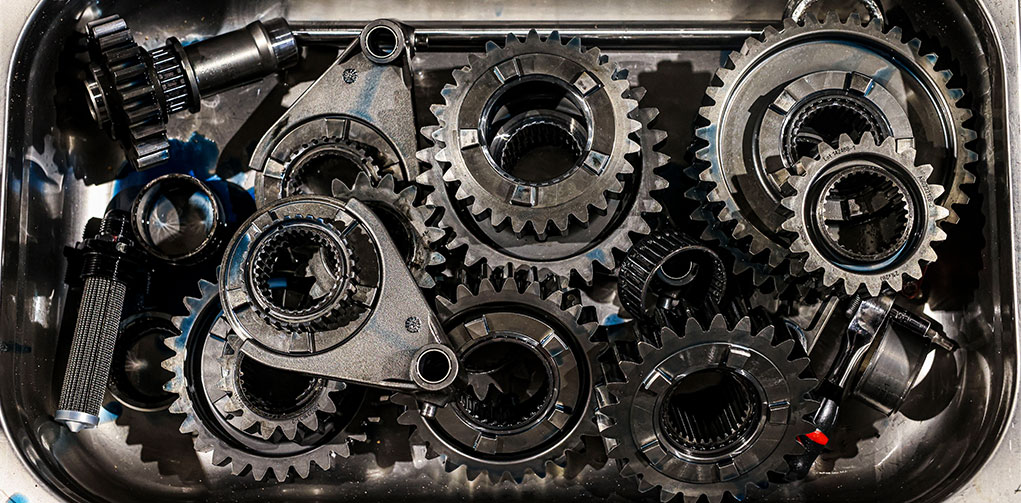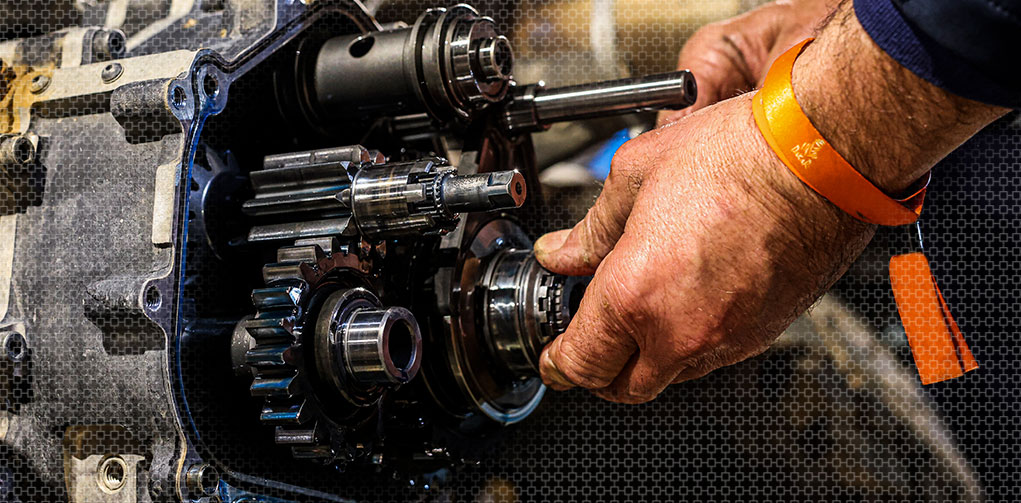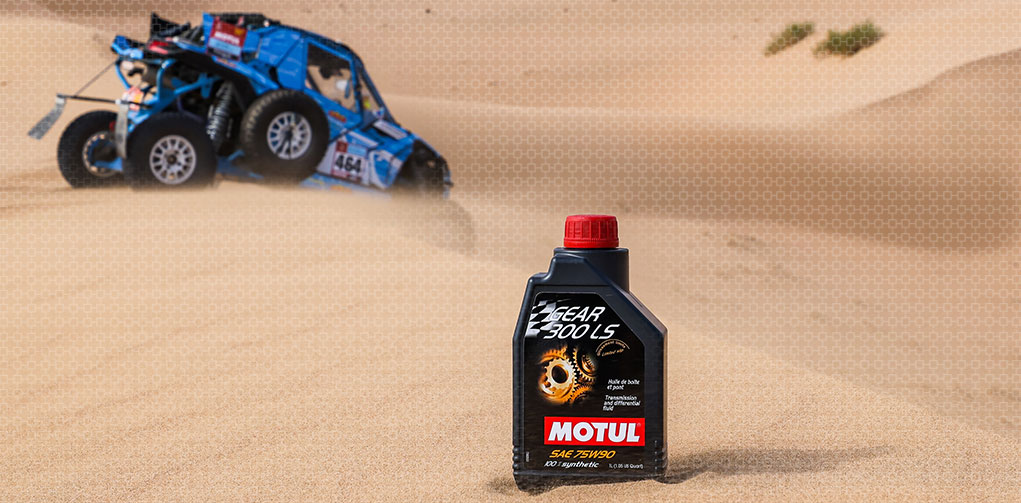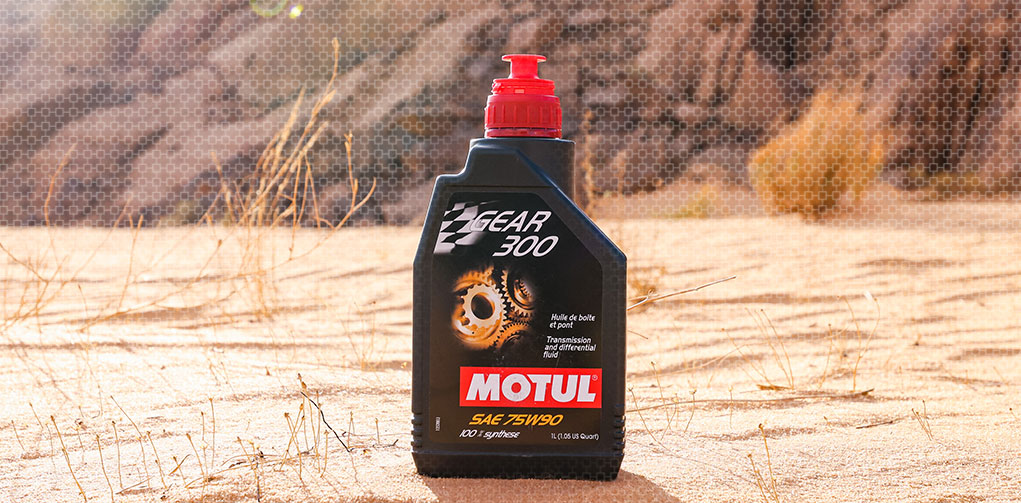11.07.2023
Your gearbox is hugely important and maintenance for it is often overlooked. Making sure your gearbox is lubricated properly will keep your car running smoothly without jolts or shakes and makes sure your performance is even and direct.
To put it simply, it is a box that contains gears. We will be going into slightly more detail here though.
The gearbox works as a method to transfer power from the engine to the wheels. Selecting different gears changes the speed and torque/power. Lower gears produce higher power but lower speed and higher gears produce lower power and higher speed. That’s why you start moving in first gear- using the power to get the vehicle moving and you use the highest gear for sitting on the motorway at a continuous speed.
With a manual gearbox it’s up to you to match the gear to the speed of the car- using the clutch to disengage the drive from the engine to the gearbox and re-engage it to select another gear.
If you have an automatic gearbox you don’t need to worry about any of that because the gearbox will do the speed matching.

As gears are essentially wheels of metal teeth rotating at very high speeds that slot together into another wheel of metal teeth. As they spin, they create friction and heat which can cause damage to the components within the gearbox. All of that will be very expensive so you need to make sure it is lubricated properly.
When new oil goes into the gearbox it will normally be bright red in colour with a semi-transparent quality. However, when the oil has been used and begins to age, it will start to darken and start to smell burnt.
If you have an automatic gearbox, check your transmission oil in a similar way to how you would check your engine oil but make sure you get the right dipstick.
Before checking for the dipstick, check your manual to see if your car has a ‘sealed for life’ gearbox. This means that your transmission fluid will never need checking, topping up or changing.
The transmission dipstick will be located at the back of the engine back and close to the bulkhead. You will also need to check whether you need to warm your engine before checking the transmission fluid- you should be able to find this in your owner’s manual.
Have some kitchen roll or an old cloth ready for the next bit as you will need to take out the dipstick, wipe it onto the cloth and push it back in again. Once you have done this, remove it again to check whether the fluid level falls between the maximum and minimum. Whilst you are doing this, take note of the transmission fluid colour. If it is bright red, the transmission oil is fresh and does not need changing. However, if it is darker in colour and has a burning odor- it is due a change.
If you have a manual gearbox, it isn’t quite as simple. You will need a jack and some jack stands before you begin.
Make sure you use jack stands and you don’t get underneath your car when it is being held up by the jack- also make sure your car is parked on a level surface before you raise it on jack stands.
Again, at this point it is important to check whether or not the gearbox oil has to be checked when the car is hot or cold.
Once you are underneath your vehicle, you will need to locate the fluid filler plug. The fluid filler plug is normally a bolt about halfway up the side of the gearbox casing.
You will need to remove the filler plug using a ratchet and socket to fit the filler plug. Next, unscrew the filler plug. You should be able to see in. The oil level should be level with the bottom of the filler hole- if you can’t get a clear view then push a fingertip in and feel the level of the oil.
Like the automatic transmission fluid, it is important to take note of the colour. If it is too dark, the oil needs changing and it will be accompanied by a burnt smell.

Just like engine oil, gearbox oil will degrade over time, so it is important that it is changed to keep your gearbox running smoothly.
It is recommended that the fluid in a manual gearbox is changed every 30,000 to 50,000 miles and every 60,000 to 100,000 miles for automatic gearboxes.

If you have checked the oil in your gearbox and you think it needs a change, this is what you need to do:

If you’re looking for high quality Motul gear oil for your vehicle, you can browse the range on the Club Motul website.
Need some advice first? Contact our technical team.
Subscribe to Club Motul to be kept up to date with all of the latest product launches plus exclusive offers and sale previews.
© 2025 Motul
Operated by Babol Ltd